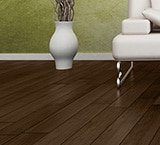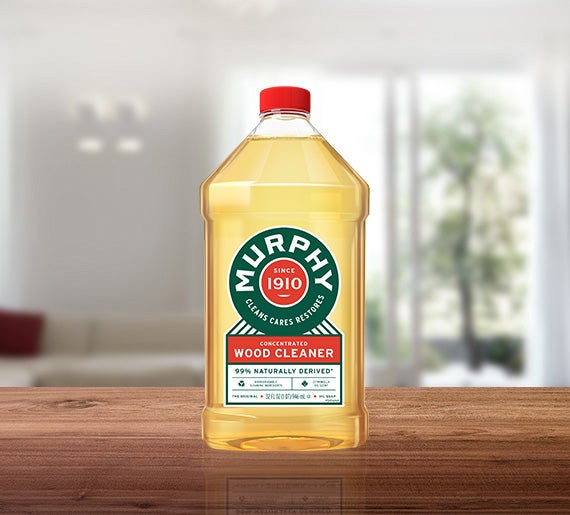The method for refinishing furniture that's already built into areas of your home is very much the same for standalone pieces. The major difference is built-in cabinets, bookcases or mantels can't be relocated to where you can ensure proper ventilation during the project. Harsh chemical strippers and dust can wreak havoc in a tightly organized home. Here's how to refinish built-in furniture that covers all your bases.
STEP 1: SAFETY
Whether you're refinishing a built-in bookcase, cabinet or mantel, make sure the room offers ample air circulation before you begin. If the weather is mild, simply open as many windows and doors as possible. Then, install a fan along the inner portion of the home and direct it toward the open windows and doors to help usher harsh fumes and dust outside.
If the weather is colder and you want to contain the chilly indoor temperatures, try closing the doors to the room you'll be working in if they lead to other rooms in the home. This way, opening a window won't extend cold air into other living spaces but you'll still circulate the air in your working space.
Another safety precaution to consider is protection for your skin and eyes. When stripping the finish, put on rubber gloves and wear a long-sleeve shirt to cover your arms. Use goggles, too, when working with strong chemical solutions to shield your eyes from the same particles that can be unhealthy when breathed in.
STEP 2: STRIP THE FINISH
This is often the most volatile part of the process, so ventilate the room and don your safety gear. Read the manufacturer's directions for your gel or paste-chemical stripper. Most solutions require that you apply the stripper, then wait the recommended timeframe before removing it.
Set a timer and don't remove the stripper a minute too soon. Don't be afraid to let the stripper do the work so you can use less elbow grease, and once the timer rings, use a putty knife to remove the finish. If there are tough spots, take some steel wool to the area. Before moving onto the next step, let the wood thoroughly dry.
STEP 3: SAND
Use a power sander and apply equal pressure back and forth over the piece of furniture. To get into corners and detail, you'll have to sand it by hand (This Old House recommends using a 150-grit sandpaper for this task). Once you've completely removed the finish, use an equally fine piece of sandpaper on the entire piece, ensuring the wood is sufficiently smooth before starting the next step. If the wood shows any nicks or holes, you should use filler to repair it prior to staining.
STEP 4: STAIN
To prepare the piece for the stain, use a clean, moist rag to wet the wood. Then, quickly apply the stain using either a stain brush or (separate) clean rag. Work the rag back and forth over the wood, wiping away the extra stain with a third cloth. Move onto the next section by wetting it and finally applying the stain.
Let the stain dry and evaluate the color. If you'd like a darker or richer color, apply another coat two coats at minimum, as suggested by HGTV. Be sure to sand the piece with a 220-grit sandpaper in between each layer.
STEP 5: FINISH
Your final step in refinishing furniture is sealing the finish itself. Apply a coat of polyurethane to protect the wood and ensure a beautiful, lasting look that won't need refurbishing for another several years.
By following the right safety procedures, you can confidently refinish furniture that's built into your home. Just be sure to strip the piece well, thoroughly sand the furniture and then apply the stain and finish with no unwanted gaps or holes.
This article was brought to you by Colgate-Palmolive Company, the makers of Murphy® Oil Soap. The views and opinions expressed by the author do not reflect the position of the Colgate-Palmolive Company.











